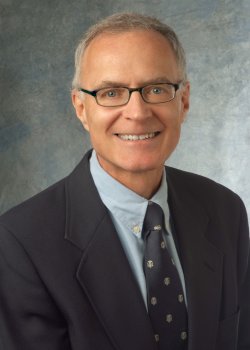
Students present at Lincoln Electric Intern Showcase

After spending the summer interning at Lincoln Electric, BS/MS students Sylvie Crowell and Jackson Smith presented their research at Lincoln Electric’s Intern Showcase in August.
A student technician at think[box] and undergraduate researcher in the AMMRC at Case Western Reserve University, Crowell was able to delve into her interest in welding during her internship. “Although I had welded before at think[box], it wasn’t until my internship at Lincoln Electric that I realized that there were so many materials science applications to development of welding consumables,” she said.
Sylvie Crowell
Throughout the summer, Crowell’s research focused on understanding how chemical formulations of flux-cored electrodes contribute to their performance. The aforementioned electrodes create protection of metal during the welding process without the necessity for external inert gasses. She spent the summer conducting scanning electron microscopy and energy-dispersive x-ray spectroscopy on weld slag samples to determine the impact of formula changes on the slagging system for developing products. Additionally, she conducted data analysis of historical data to determine the effect of alloying elements on the tensile strength of welds. Many of the formula changes Crowell confirmed will be produced as prototypes, then tested to see if desirable properties were achieved.
For Smith’s main project, “Development of Python Software to Track and Characterize Weld Spatter in High Speed Welding Videos,” she and her Lincoln Electric group wrote a custom piece of software to take high speed videos of a weld to detect the amount of spatter in a weld and the size distribution of said spatter. Their software took high speed videos of the weld and outputted videos that marked the spatter and a datasheet with information on each spatter event. The group developed the software by taking videos of a single arm Fanuc robot welding flat on a steel plate and used image processing and object detection to analyze the spatter.
This project was Smith’s first experience with robotics, let alone single arm robotics. She enjoyed learning how the single arm robot worked and how to weld with it, describing it as “really challenging and fun.” She also enjoyed learning about the video making process, including using different camera filters and lenses to get the ideal video. “Getting everything set up, filmed, and saved was time consuming and would take whole days to get some good footage.”
Jackson Smith
In addition to her main project, Smith developed a machine learning algorithm for detection of x-ray weld porosity. She tuned the model and trained it on images that she'd manually labeled pores in. Additionally, she worked on writing code to pull data from SQL tables collecting real-time data from Lincoln Electric's wire drawing process. Her data will be used to determine optimal processing parameters for wire break prevention for each type of steel.
She spent much of her time coding with another intern and had several meetings a week with Lincoln Electric employees in Chennai, India, who were working on machine learning software development.
All Lincoln Electric staff were invited to the 150-minute showcase, and various engineers and group leaders attended. Crowell was pleased that many engineers and management professionals stopped by her poster to hear about her research and ask questions, while Smith said that her table “was busy for almost the whole two hours we were presenting.”
Crowell and Smith also had the opportunity to see their fellow interns’ research at the showcase. Smith particularly enjoyed a presentation from a Ph.D. student from Georgia Institute of Technology, who developed software in C++ to use different sensors to create a real time distortion map for additive manufacturing. The student's map was used to detect and automatically correct distortion from planned paths to keep prints going.
In addition to CWRU and Georgia Tech, Lincoln Electric interns came from Ohio State University, Ferris State University, Rochester Institute of Technology, University of Toledo and Ohio University. Crowell pointed out that CWRU and Ohio State had the largest contingents.
Crowell and Smith’s advisor, Distinguished University Professor John Lewandowski, was “very excited” to see two of his students spend the summer at Lincoln Electric, praising the company as a “great partner” to CWRU. “(Lincoln Electric) has exposed our students to great opportunities in materials and manufacturing,” he said. “We look forward to many future interactions with Lincoln Electric and are looking forward to Sylvie and Jackson rejoining us on campus for the fall semester.”
Many CWRU alumni are now engineers at Lincoln Electric, including Smith’s main supervisor for the summer, Morris Satin.
